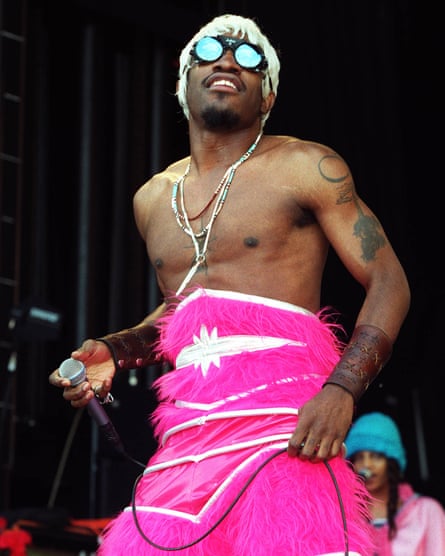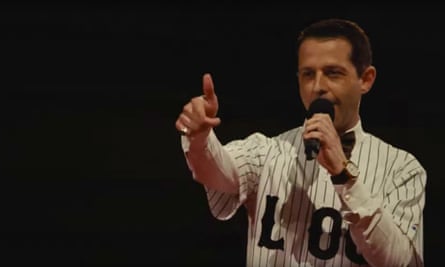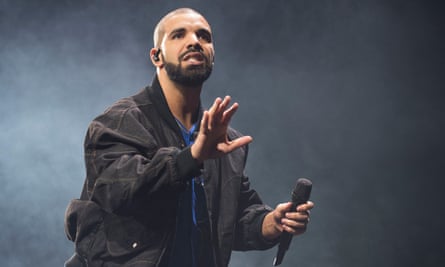Who do you think of when you hear the word diva? A trailblazing punk singer? A civil rights activist and second world war spy? A man?
Well, maybe – especially if that man is Elton John: notorious tantrummer, expert celebrity feuder and wearer of fabulously ludicrous costumes, one of which – an enormous, luxuriously befeathered Louis XIV-inspired look designed for his 50th birthday party – is among the centrepieces of the V&A’s upcoming exhibition, Diva. Celebrating “the power and creativity of iconic performers”, it aims to recast the diva as a force for social change by focusing on those who have embraced, and subverted, diva-dom and “challenged the status quo” in the process, including rockstars Debbie Harry and Siouxsie Sioux, and war hero and showgirl Josephine Baker.
That the diva label is shedding its long-held connotations of misogyny and scorn is a good thing. Initially used to describe leading female opera singers in the late 17th century (the word is Latin for goddess), diva has retained some of that majesty in modern parlance, but has also come to denote a scarily demanding, uber-glam woman who takes self-absorption and entitlement to the next level. As a put-down, it has served as a sibling to bitch; an insult used to keep women who know their own worth in their place.
As the V&A has recognised, part of undermining that sexism involves applying the term to men too – although the museum isn’t exactly going out on a limb with its male divas. The show also features RuPaul, a drag queen who blurs gender boundaries anyway, and Prince, who, with his shimmery purple suits and penchant for heels, was androgynous enough not to have anyone questioning the term too closely. But if Debbie Harry counts, then why not John Lydon – the iconoclast who reinvented pop music twice, wore a series of show-stopping outfits and isn’t exactly known for suffering fools gladly? Or David Bowie, an uncompromising artist who revolutionised masculinity as a construct in the 70s? If Rihanna, why not Drake, with his perfectly manicured beard and tendency to travel with a colossal amount of luggage? Or, if flamboyant clothing is a prerequisite, then what stops Outkast’s André 3000 from being a diva too?

My personal vote for male diva of the moment goes to Succession’s Kendall Roy, a character who places huge demands on his staff, loves the limelight (see: season two’s eye-watering rap) and throws extravagant birthday parties themed around his own psyche (including a pink inflatable vagina tunnel to represent his birth: so extra!). In fact, Jeremy Strong, the actor who plays Kendall, is a bit of a diva too: in 2021, he revealed that he often refused to rehearse with his cast-mates and practised a form of acting he called “identity diffusion”, statements that were widely ridiculed online.
Forget the gender pay gap: more male divas, that’s real equality! And yet, I’m not sure the diva is the right territory for po-faced progressiveness. In fact, I’m a bit concerned that the V&A’s quest to strip the term of its problematic “difficult woman” connotations – and broadening its definition to mean pioneering, visually striking creators uncowed by doubters – might end up flattening some of the diva’s peculiar charms.
As contemporary internet culture understands, the diva is not supposed to be a wholly serious – or virtuous –proposition. Mariah Carey is cherished online not only for her supreme talent and chronic glitz, but the drop of acid in her baby pink world, and her keen sense of the ridiculous. This is a woman who once said she couldn’t wear flats because “my feet repel them”, and who in the early 00s suggested she’d never heard of rival megastar Jennifer Lopez. In the UK, meanwhile, hun culture – the social media comic subgenre that celebrates the low-brow, low-rent glamour of soap and daytime telly stars – is besotted with a camp but slightly mundane style of diva-dom best personified by ex-Towie star Gemma Collins (her reality series was subtitled: Diva Forever), whose dedication to glam and mercurial, egocentric nature makes her a one-woman meme-machine.

The diva is where the sublime meets the shamelessly self-indulgent and the slightly (sometimes very) silly. In the exhibition’s accompanying promotional materials, Dame Shirley Bassey defines the diva as a person who manages to “break through barrier after barrier: to have your voice heard”. As a mixed-race Welsh woman who topped the charts in the early 60s, Bassey carved her own path with breathtaking chutzpah. At the same time, she is represented in the exhibition by her 2017 Glastonbury outfit, a hot pink feathered gown by Julien Macdonald, and a pair of bejewelled wellies.
Hopefully this sense of knowing fun and unabashed froth will be well represented elsewhere. The diva is no stick-in-the-mud, but she’s no serious activist either – she’s too self-involved for that. It’s what makes her a rare blast of mildly transgressive fun in a celebrity landscape full of overwrought do-goodery. It also means that, despite the V&A’s good intentions, she really doesn’t need to be reframed as an emblem of societal progress – as the diva herself already knows, she’s more than enough as she is.
-
Do you have an opinion on the issues raised in this article? If you would like to submit a response of up to 300 words by email to be considered for publication in our letters section, please click here.

